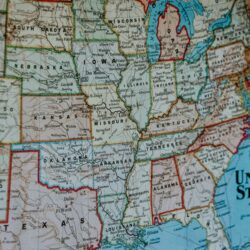 Research
Research Diversity in the U.S. Government: Let’s Look at the Economists
While greater diversity in economics at institutions of higher education has become a common topic of discussion, there has been much less focus on staff economists in the U.S. federal government, such as at the Federal Reserve System, Government Accountability Office, Congressional Research Service, and the Congressional Budget Office. Is the government doing better?
To answer that question, David Wessel, Lorena Hernandez Barcena, and Nasiha Salwati of the Hutchins Center on Fiscal & Monetary Policy at the Brookings Institution looked at the gender and racial breakdown of the more than 2,200 federal government economists with a Ph.D. Their report, “Gender and Racial Diversity of Federal Government Economists: 2020 Data,” is an update of one completed in 2018.
The Census Bureau studied economists solely in the executive branch of the federal government and found that diversity paralleled the profession overall, where it increased over time but was still behind other disciplines. Wessel, Hernandez Barcena, and Salwati reported that data from 2020 showed that of Ph.D. economists in the federal government 29 percent are women, compared to 27 percent of economics faculty in academia. These findings are similar to the 2018 report also conducted by David Wessel, Louise Sheiner, and Michael Ng that found 30 percent of Ph.D. economists in the federal government are women, compared to 23 percent of economics faculty in academia.
The 2020 data also found that 26 percent of Ph.D. economists in the federal government are Black, Indigenous, and people of color (BIPOC), compared to 19 percent of economics faculty in academia. The 2018 data demonstrated that 24 percent of Ph.D. economists in the federal government are BIPOC, whereas they make up 21 percent of economics faculty in academia.
For economists employed by the Federal Reserve System in 2020 (which employs nearly 40 percent of the federal government’s economists), 24 percent are women; that percentage has been roughly stable since 2013, which is the first year they had Federal Reserve System data. Economists in the Federal Reserve System who are BIPOC rose from 22 percent in 2013 to 28 percent in 2020.




























































































